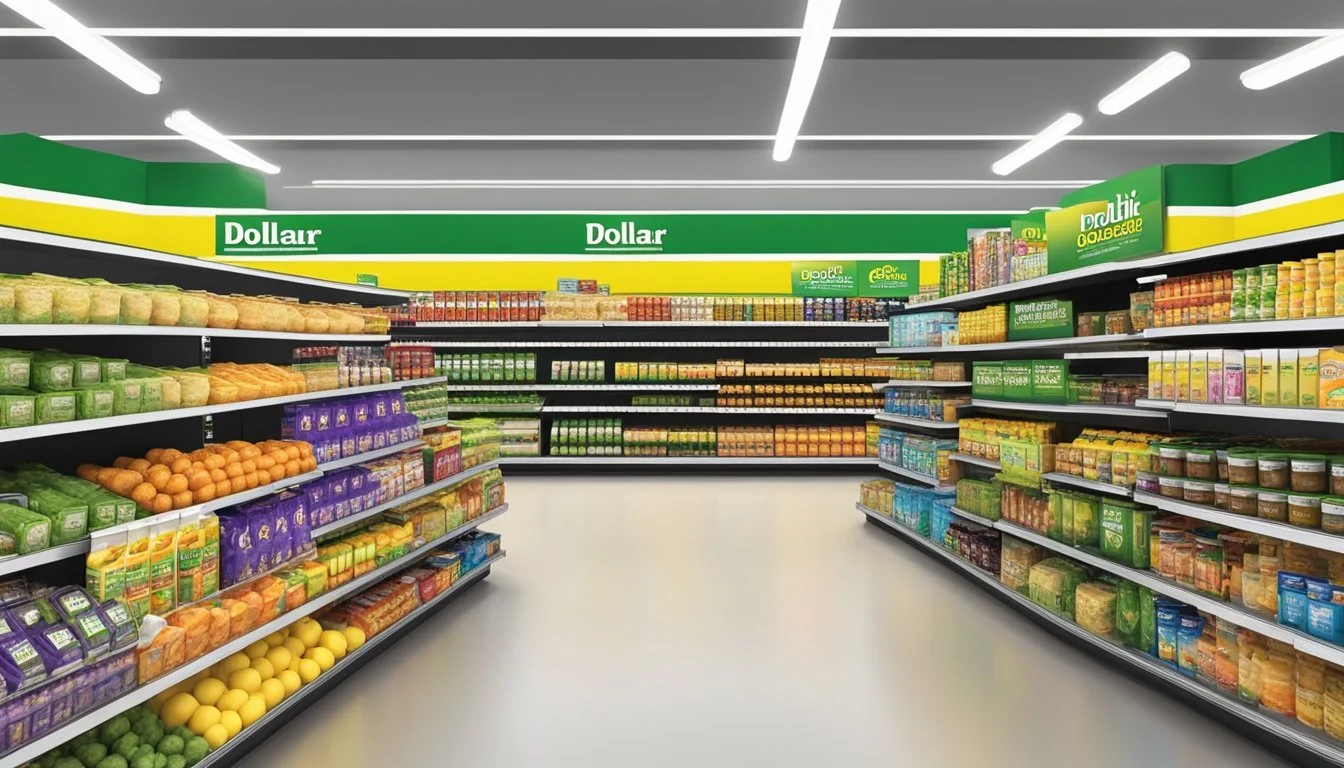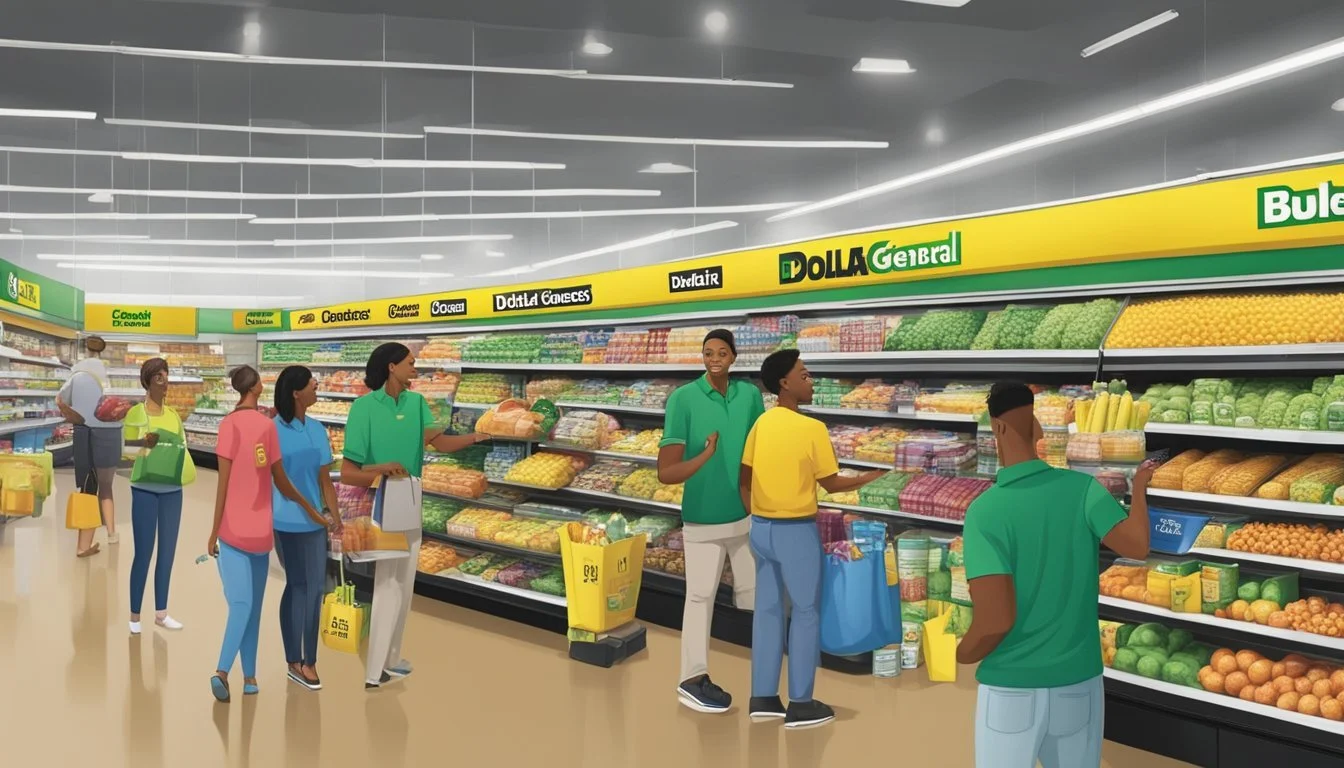Dollar General vs Publix
Comparing Prices, Selection, and Service
When it comes to grocery shopping, consumers are always on the lookout for the best value. Dollar General and Publix represent two different approaches to meeting shoppers' needs. Dollar General focuses on offering discounted goods and everyday essentials, while Publix is known for its quality products and customer service.
These two retailers cater to different segments of the market. Dollar General aims to provide affordable options in smaller, convenient locations. Publix, on the other hand, offers a full-service supermarket experience with a wider range of products, including fresh produce and prepared foods.
The choice between Dollar General and Publix often depends on individual priorities. Budget-conscious shoppers may find Dollar General's prices appealing for certain items. Those seeking a broader selection and a more upscale shopping environment might prefer Publix. Comparing specific product prices and considering factors like store location and shopping experience can help determine which store better suits one's needs.
Company Overviews
Dollar General and Publix are two prominent retailers in the United States, each with a unique history and business model. These companies have grown to become significant players in their respective market segments.
History of Dollar General
Dollar General was founded in 1939 by J.L. Turner and his son Cal Turner Sr. in Scottsville, Kentucky. The company initially focused on selling surplus goods at low prices.
In 1955, the Turners converted their wholesale business to a retail operation named Dollar General. The stores adopted a $1 price point for many items, which became their signature strategy.
Dollar General expanded rapidly throughout the 1960s and 1970s, opening stores primarily in small towns and rural areas. The company went public in 1968 and continued its growth trajectory.
Today, Dollar General operates over 18,000 stores across 47 states. It offers a variety of merchandise, including food, household supplies, and clothing, with many items priced at $1 or less.
History of Publix
Publix Super Markets was founded in 1930 by George W. Jenkins in Winter Haven, Florida. Jenkins opened the first Publix Food Store with innovative features like air conditioning and automatic doors.
In 1940, Jenkins introduced Florida's first supermarket, setting new standards for cleanliness and customer service. Publix expanded steadily throughout Florida in the following decades.
The company began its employee ownership program in 1930, which has become a cornerstone of its corporate culture. Publix is now the largest employee-owned company in the United States.
Publix has grown to operate over 1,200 stores across seven southeastern states. The company is known for its high-quality produce, prepared foods, and exceptional customer service.
Store Formats and Layouts
Dollar General and Publix employ distinct store formats to cater to different customer needs and shopping preferences. Their layouts reflect their unique market positioning and product offerings.
Dollar General's Store Design
Dollar General operates several store formats tailored to specific markets. Their traditional stores average 7,400 square feet, focusing on convenience and affordability. DG Market stores, larger at around 16,000 square feet, offer an expanded selection of fresh produce and groceries.
The company's pOpshelf concept combines with DG Market in a store-within-a-store format. This hybrid approach merges essential groceries with trendy, affordable items for a diverse shopping experience. Dollar General stores typically feature simple layouts with clearly marked aisles and prominent signage to facilitate quick, efficient shopping trips.
Publix's Store Design
Publix supermarkets are significantly larger than Dollar General stores, averaging 45,000 to 50,000 square feet. The company recently introduced a new prototype store measuring 55,701 square feet, showcasing its commitment to spacious shopping environments.
Publix stores emphasize a customer-centric layout with wide aisles and clearly defined departments. The design prioritizes an upscale feel with attractive displays and a focus on fresh products. Deli counters, bakeries, and prepared food sections are prominent features, catering to shoppers seeking quality and convenience.
Publix's layout encourages exploration and longer shopping trips, contrasting with Dollar General's efficiency-focused design. The stores often include specialty sections like organic products and gourmet items to attract diverse customer segments.
Product Offerings
Dollar General and Publix offer distinct product selections to cater to different customer needs. Both stores stock essentials, but their merchandise mix varies significantly in terms of variety, quality, and focus areas.
Dollar General's Merchandise
Dollar General specializes in low-cost household items and basic groceries. Their shelves are stocked with packaged foods, snacks, and beverages. The store offers limited fresh produce and dairy products in some locations.
Dollar General's non-food items include cleaning supplies, paper products, and personal care essentials. They also carry basic housewares, greeting cards, and seasonal items at budget-friendly prices.
The store focuses on providing everyday necessities rather than gourmet or specialty products. Brand selection is often limited, with a mix of national brands and private label options.
Publix's Merchandise
Publix offers a comprehensive grocery selection with a strong emphasis on fresh foods. Their produce department features a wide variety of fruits and vegetables, often sourced locally when possible.
The store's meat and seafood counters provide high-quality cuts and fresh fish. Publix is known for its bakery and deli sections, offering freshly baked goods and prepared foods.
Publix stocks a broad range of national brand and gourmet products alongside their own Publix-branded items. They carry extensive selections of dairy, frozen foods, and pantry staples.
Non-food items at Publix include health and beauty products, cleaning supplies, and kitchenware. Many locations also feature floral departments and pharmacy services.
Pricing Strategies
Dollar General and Publix employ distinct pricing approaches to attract customers and drive sales. These strategies reflect their unique market positions and target demographics.
Dollar General's Pricing
Dollar General focuses on offering low prices across its product range. The retailer maintains a no-frills shopping environment to keep costs down. Many items are priced at $1 or less, appealing to budget-conscious shoppers.
Dollar General uses a everyday low price (EDLP) model. This means consistently low prices rather than frequent sales or promotions. The chain leverages bulk purchasing power to negotiate discounts from suppliers.
Private label products play a key role in Dollar General's pricing strategy. These store brand items are often priced 20-30% lower than national brands. The company also offers smaller package sizes to hit lower price points.
Publix's Pricing
Publix takes a different approach, emphasizing quality and customer service alongside competitive pricing. The supermarket chain uses a high-low pricing strategy. This involves higher everyday prices balanced with regular promotions and discounts.
Publix offers weekly "Buy One, Get One Free" (BOGO) deals on popular items. These promotions rotate, encouraging repeat visits. The chain also provides digital coupons through its app and website.
Publix matches competitors' prices on identical items. This price guarantee helps build customer trust. The retailer's private label products offer value alternatives to national brands, though not as aggressively priced as Dollar General's.
Target Consumer Base
Dollar General and Publix cater to distinct demographic groups with different shopping preferences and needs. Their target consumers reflect the stores' contrasting business models and locations.
Dollar General's Demographics
Dollar General primarily serves rural and low-income communities. Its core customer base consists of budget-conscious shoppers seeking affordable essentials. The chain attracts families with annual incomes under $40,000, often living in small towns or suburban areas.
Rural residents appreciate Dollar General's convenient locations, as these stores often fill gaps where larger retailers are absent. The company's no-frills approach appeals to seniors on fixed incomes and younger adults starting their careers.
Dollar General also draws bargain hunters from various income levels who shop there for specific deals. These customers may combine Dollar General purchases with trips to other stores.
Publix's Demographics
Publix targets middle to upper-middle-class consumers in suburban and urban areas. Its shoppers value quality products, excellent customer service, and a pleasant shopping environment. The chain attracts families, professionals, and retirees with disposable income.
Health-conscious consumers appreciate Publix's fresh produce and organic offerings. The store's prepared foods section appeals to busy professionals and families seeking convenient meal solutions.
Publix's BOGO deals and weekly specials draw cost-conscious shoppers who still prioritize quality. The chain's strong presence in Florida makes it popular among seasonal residents and tourists familiar with the brand.
Loyal Publix customers often cite the store's cleanliness, friendly staff, and consistent product availability as reasons for their preference. These factors contribute to Publix's reputation as a premium supermarket option.
Market Presence and Growth
Dollar General and Publix have pursued distinct expansion strategies to increase their market presence. Both companies have focused on different geographic regions and customer segments to drive growth and revenue.
Dollar General's Expansion
Dollar General has aggressively expanded its store count across the United States. The company has targeted rural and suburban areas, often in locations underserved by larger retailers. In 2023, Dollar General operated over 18,000 stores in 47 states.
The chain's expansion strategy emphasizes rapid store openings. Dollar General typically adds over 1,000 new locations annually. This approach has led to significant revenue growth, with the company reporting $37.8 billion in net sales for fiscal year 2022.
Dollar General's same-store sales have also shown consistent growth. The company reported a 4.3% increase in same-store sales for Q4 2022.
Publix's Expansion
Publix has focused its expansion efforts primarily in the Southeastern United States. The company operates over 1,300 stores across seven states: Florida, Georgia, Alabama, South Carolina, Tennessee, North Carolina, and Virginia.
Publix's growth strategy emphasizes quality over quantity. The company carefully selects new store locations based on market potential and demographics. This approach has resulted in steady revenue growth, with Publix reporting $48.4 billion in sales for 2022.
The supermarket chain has successfully entered new markets, such as Virginia in 2017. Publix continues to strengthen its presence in existing states while exploring opportunities for further expansion.
Publix's same-store sales have shown consistent growth. The company reported a 9.9% increase in comparable store sales for fiscal year 2022.
Shopping Experience
The checkout process can significantly impact a customer's overall shopping experience. Both Dollar General and Publix have distinct approaches to managing customer flow and transactions at their registers.
Checkout Process at Dollar General
Dollar General prioritizes efficiency in its checkout process. Stores typically have 2-4 registers open, depending on customer volume. Cashiers scan items quickly and bag purchases in plastic bags. Self-checkout kiosks are available in some locations, allowing customers to scan and pay for items themselves.
Dollar General uses rolltainers - wheeled metal cages - to transport merchandise from trucks to store shelves. This system enables faster restocking but can occasionally obstruct aisles during busy periods. Employees aim to clear rolltainers quickly to minimize disruption to shoppers.
Checkout Process at Publix
Publix emphasizes customer service in its checkout experience. Stores often have 6-8 registers open during peak hours. Cashiers engage in friendly conversation while scanning items. Baggers assist by carefully packing groceries in paper or reusable bags.
Publix offers a "Publix Promise" guarantee - if an item scans at a higher price than advertised, customers receive it for free. This policy demonstrates Publix's commitment to accuracy and customer satisfaction. The store layout typically allows for smooth traffic flow, with wide aisles and clearly marked checkout lanes to reduce congestion.
Brand Reputation and Customer Loyalty
Dollar General and Publix have cultivated distinct brand identities and customer perceptions. Their reputations influence shopper loyalty and store preferences in different market segments.
Consumer Perception of Dollar General
Dollar General is known for its budget-friendly prices and convenient locations. Shoppers appreciate the store's focus on everyday essentials at low costs. The chain has built a reputation for making groceries and household items accessible in rural and underserved areas.
Dollar General's no-frills approach appeals to price-conscious consumers. The store's limited selection of fresh produce and name-brand items can be a drawback for some shoppers. However, many customers value the predictable pricing and quick shopping experience.
The company faces challenges in maintaining consistent quality across its vast network of stores. Some locations struggle with organization and cleanliness issues, which can impact customer satisfaction.
Consumer Perception of Publix
Publix enjoys a strong reputation for customer service and quality products. The supermarket chain consistently ranks high in consumer trust surveys. In 2023, Publix was recognized as one of the most trusted grocery retailers in America.
Shoppers praise Publix for its clean stores, wide selection of fresh produce, and friendly staff. The company's "Publix Promise" guarantees customer satisfaction, building loyalty among its patrons. Many customers appreciate the store's commitment to community involvement and charitable initiatives.
Publix's higher prices compared to discount chains can be a concern for budget-conscious shoppers. However, the retailer's frequent BOGO deals and quality store brands help offset this perception. The company's focus on creating a pleasant shopping environment has fostered a dedicated customer base in its operating regions.
Analysis and Comparison
Dollar General and Publix offer distinct shopping experiences for consumers. Dollar General focuses on providing low-cost items in smaller stores, often located in rural areas. Publix, on the other hand, is known for its larger supermarkets with a wider range of products and services.
Prices at Dollar General tend to be lower for many basic items and household goods. The chain specializes in offering affordable options for everyday essentials. Publix typically has higher prices but is known for frequent sales and promotions.
Product selection varies significantly between the two stores. Dollar General carries a limited range of groceries and household items, with a focus on non-perishables and packaged goods. Publix offers a more extensive selection, including fresh produce, meats, bakery items, and specialty products.
Shopping experience differs markedly. Dollar General stores are designed for quick, convenient purchases with minimal frills. Publix emphasizes customer service, clean stores, and a more upscale atmosphere.
Quality perceptions also diverge. Dollar General products are often perceived as budget-friendly but may not always match the quality of national brands. Publix is known for its high-quality store brands and fresh offerings.
Store locations cater to different demographics. Dollar General targets rural and lower-income areas, while Publix is more prevalent in suburban and urban locations.









